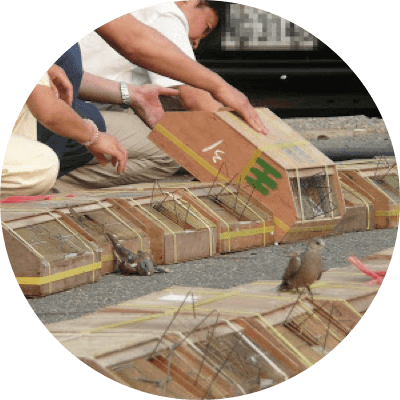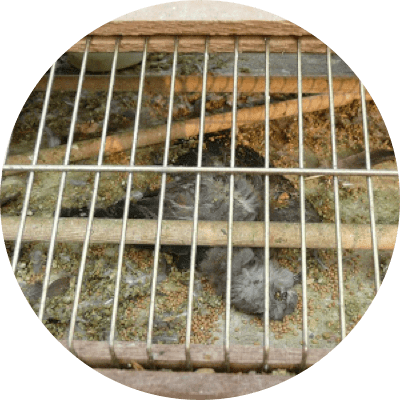Warbling white-eyes are often seen in trees all around the city. They have olive green plumage with bright white eye-rings. People give them many nicknames, such as the green whistle, green chirper, yearner and white eye-ringer.
Unfortunately, their close relationship to humans sometimes poses a threat to their well-being.
“Life release” (the practice of releasing caged animals into the wild) in Chinese literally means “to release an animal’s life.” While “life release” can serve as a symbol of freedom, it has become a systemized activity.
The warbling white eye is one of the cheaper birds to be released. Other common species include Chinese bulbuls, spotted munias, nutmeg mannikins, pigeons and sparrows. Because the release groups purchase birds in bulk numbers, this contributes to a great deal of catching. The birds are caught purely for people to release them again. During capture, the birds often die. The ones that survive are sent to warehouses in standardized cages, which causes more casualties.
Because people release the animals in random locations, they are often attacked by the original resident animals there, or the released animals may lead an attack. Some of them won’t survive as they are not used to the new environment they are released into. Furthermore, this can threaten the quality of human life and undermine the environment. Sometimes, the increase in the density of animals can trigger the risk of various infectious diseases and change the balance of the ecological system.
During the past few years, some cities such as Nantou and Taichung have drawn up regulations governing animal release and conservation, which clearly state rules related to life release. This has significantly reduced bird catching and trading transactions.
While people have the right to try to redeem themselves by releasing animals, we also hope that birds can enjoy the right not to be disturbed. The birds should be able to fly freely in the mountains and woods.




